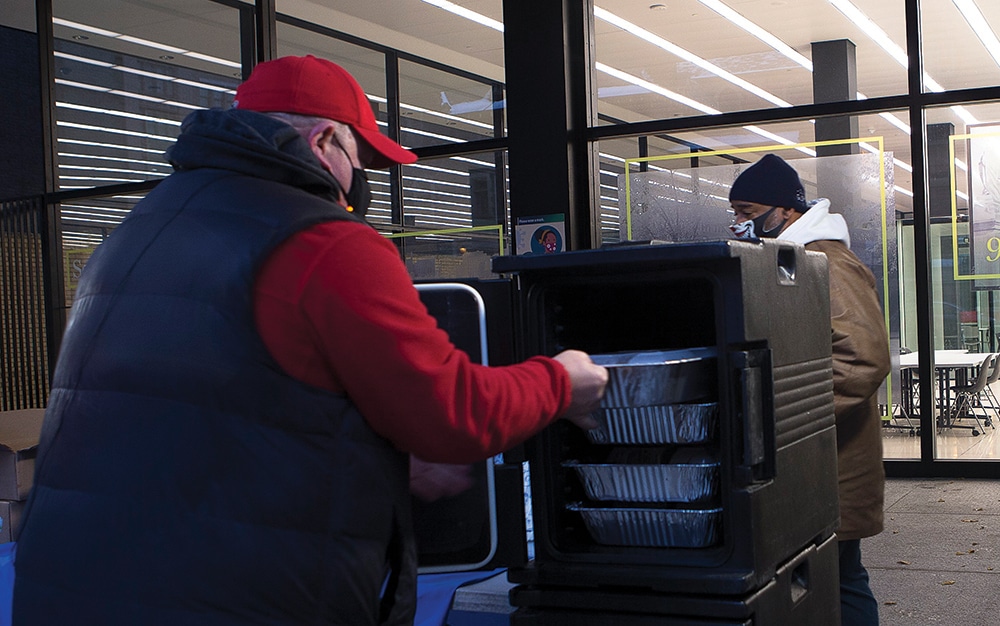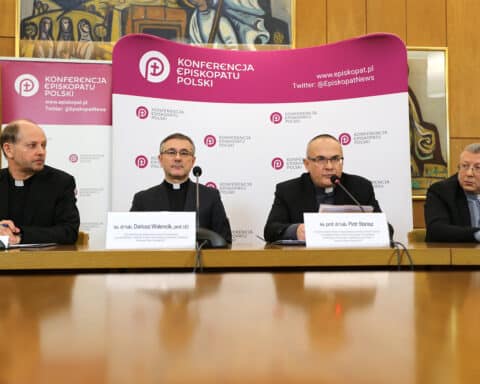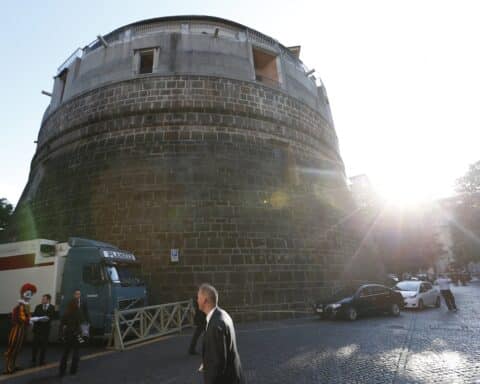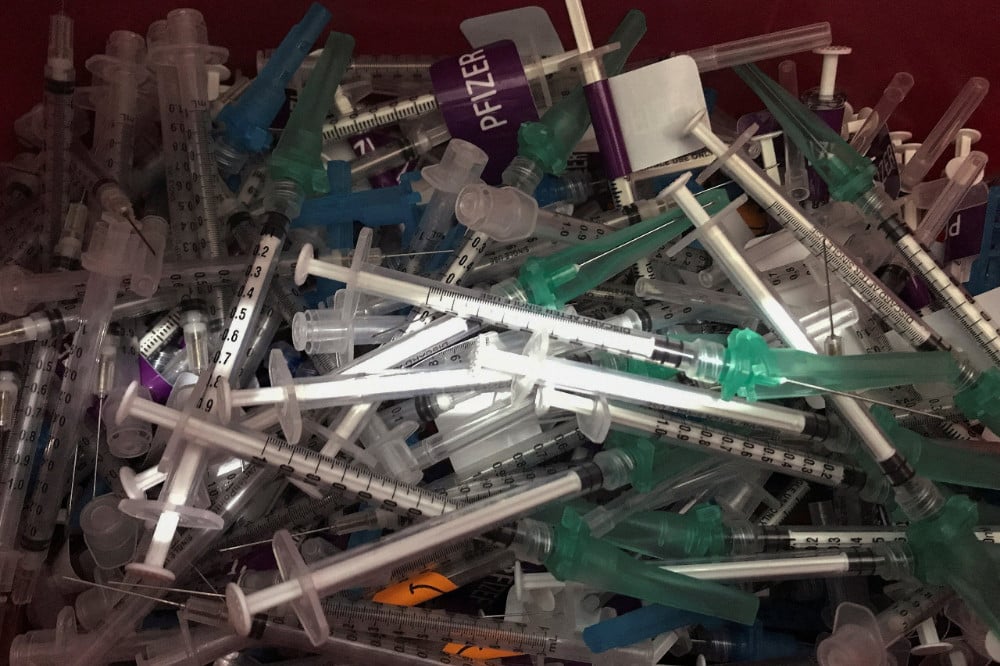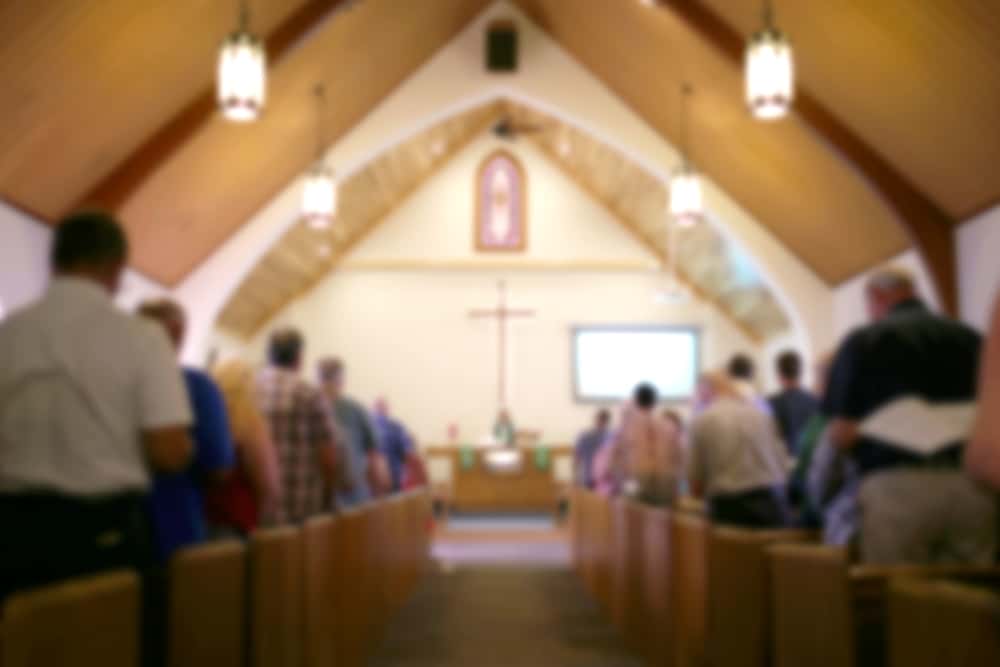As the economy began sliding early on during the COVID-19 pandemic, many employers, including Catholic institutions, wondered how they could keep the lights on, pay their workers and continue to meet the needs of those they served. Mishawaka Catholic School in Mishawaka, Indiana, was among the organizations uncertain of how it would operate in the weeks and months after COVID-19 was declared a pandemic last March.
“In the beginning, there was a lot of fear,” said Tammy Christianson, business manager of Mishawaka Catholic School. “We had to give it up to God and trust that he would provide a way, even though we had no idea how we could continue to pay everyone and how families could continue to pay tuition.”
Although churches and faith-based organizations do not usually qualify for loans from the U.S. Small Business Administration, as the economy fell, Congress allowed them to access the Paycheck Protection Program (PPP) as part of the CARES Act, the federal coronavirus relief package. The $659 billion program gave forgivable loans to organizations if they did not lay off workers and spent at least 60% on payroll during the period covered by the loan. An estimated 100,000 small businesses were kept afloat, and nearly 200 dioceses and other Catholic institutions received a total of at least $3 billion according to a recent report by the Associated Press.
The Associated Press report presented an incomplete picture of how the Church is organized and operated, as it created a false impression that the Church was one big entity receiving a large sum of money rather than a collection of individual institutions that varies from schools to parishes to charitable programs.
Catholic mission
The Catholic organizations that received loans used them to continue to pay employees who allow these entities to carry out the mission of the Church.
“Our only organization that qualified for a PPP loan was Holy Family Villa, a skilled nursing facility,” Brigid Murphy, director of communications at Catholic Charities of the Archdiocese of Chicago, told Our Sunday Visitor. The money from the federal loans “went to keep our frontline workers employed.” Holy Family Villa is a 129-bed, 24-hour nursing and rehabilitation facility in the southwest suburbs of Chicago that offers skilled care and services to promote physical, mental, emotional, social and spiritual well-being in a homelike environment.
The Associated Press report pointed at the Diocese of Orange, California, for receiving $3 million in PPP loans despite recently opening “a sparkling glass cathedral estimated to cost over $70 million.”
Tracey B. Kincaid, director of strategic communications for the Diocese of Orange, explained to Our Sunday Visitor that the diocese is a top employer in Orange County. “We applied for loans to be used as intended,” she said, “to keep people working and to avoid critical activities from being halted throughout the Diocese, including allowing us to bring back several hundred school employees from furlough to teach children and to keep parish staff employed to provide important support services such as food distribution, cemetery services and spiritual counseling by phone.”
If not for the loan, Kincaid said they would have had to cut back on staff and “would not have been able to have provided the level of outreach to the poor and others who needed assistance during these very trying times.”
The Catholic Sentinel, the newspaper for the Diocese of Portland, Oregon, reported that PPP loans kept Catholic Charities of Oregon serving people in need across the region. At St. André Bessette Parish in Portland’s Old Town neighborhood, an $80,000 PPP loan made it possible for staff to continue serving homeless people and keep the parish open despite a 75% drop in offertory donations.
Portland’s Catholic Youth Organization/Camp Howard received a $249,000 loan, but also had to return $350,000 in fees for canceled sports and summer camps. “The PPP funds paid CYO staff through May and June and provided brief summer jobs for youths who had planned to earn money for college by being camp counselors,” the Catholic Sentinel reported. Blanchet House of Hospitality, a feeding, addiction recovery and housing site with an Old Town location and a farm in Carlton received a loan of about $125,000 to adapt and keep serving 10,000 meals per week. The pandemic halted the usual food donations from restaurants, raising the per-meal expenses from 33 cents to about $5 per meal.
Assistance for schools
One result of the pandemic’s economic crises was that many families could no longer pay tuition at Catholic schools. On Feb. 8, 2021, the National Catholic Educational Association reported that enrollment in Catholic schools in the United States dropped 6.4% from the previous academic year — the largest single-year decline in at least five decades.
Tammy Christianson, the business manager for Mishawaka Catholic Schools, said they received a loan for $210,500, making it possible to retain all 50 employees and help families no longer able to pay tuition. Their usual subsidies from three parishes were reduced when weekly church donations dropped dramatically, while at the same time a number of families could no longer afford tuition.
“We were able to help quite a few families with tuition assistance and did not turn anyone away,” Christianson stated. “We’ve been able to safely have our kids back in the classroom since day one this school year. There was never a question about that for our pastors and principal. God will provide. This is our faith; this is what we know — taking care of each other.”
Maria Debro, business manager for the historic Mission San Xavier del Bac, located 10 miles south of Tucson, Arizona, on the Tohono O’odham Nation San Xavier Indian Reservation, told Our Sunday Visitor that the mission received a PPP loan for $166,000 for the school and church. The school serves the Tohono Oʼodham Reservation.
“When you work for a church which is an historical landmark and depends on tourism for 80% of your income, and then it can’t have any visitors — it’s pretty scary,” she said. “This is a working church. If not for the pandemic, we would be having Masses and baptisms and weddings.”
Since most students did not have computers, the principal was able to raise money to get Chromebooks so that they could implement distance learning. The PPP loan allowed the mission church and school to retain salaries and medical benefits for the approximately 50 employees — 90% of whom have families to care for. Keeping everyone employed also allowed for much needed repair work and cleaning of the mission, tasks that can be difficult amid traffic from tourists.
“This is special, this church — over 200 years old,” Debro said. “It doesn’t have ventilation or windows, so having crowds of people inside the building is not doable. It’s just begun to open up to small groups for short periods of time, and Masses will begin again soon.”
In the meantime, student enrollment dropped from 128 students to 84. “We’ll see how long we can keep going with the kind of budget it requires, especially here in the desert where utilities are high,” Debro said. “Because over 90% of enrollment is under the poverty line, we look for tuition organizations that help. But I had to think about it long and hard about applying [for PPP]. I considered how it looks, because people like to beat on the Catholic Church. But thanks to the loan, people were able to keep working.”
Patti Maguire Armstrong writes from North Dakota.

